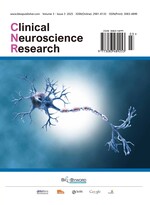Predictive Role of PSG Parameters on the Efficacy of Cognitive Behavioral Therapy for Insomnia (CBT-I)
Abstract
Objective: To explore the predictive value of baseline polysomnography (PSG) parameters on the efficacy of cognitive behavioral therapy for insomnia (CBT-I) in the treatment of chronic insomnia, and to clarify its clinical application value. Methods: Forty patients with chronic insomnia who visited the Sleep Medicine Center of the hospital from March 2024 to June 2025 were selected. All patients completed 8 weeks of CBT-I treatment and PSG monitoring before and after treatment. The correlation between baseline PSG parameters (sleep efficiency, wake time after sleep onset, and proportion of N3 sleep stage) and the improvement values of the Insomnia Severity Index (ISI) and sleep efficiency after treatment was analyzed. Multiple regression analysis was used to screen predictive factors of efficacy. Results: Baseline sleep efficiency (r=0.36, P<0.05) was positively correlated with ISI improvement value, wake time after sleep onset (r=-0.33, P<0.05) was negatively correlated with ISI improvement value, and the proportion of N3 sleep stage (r=0.29, P<0.05) was positively correlated with ISI improvement value. Multiple regression analysis showed that baseline sleep efficiency (β=0.27, P=0.03) and wake time after sleep onset (β=-0.24, P=0.04) were independent predictors of ISI improvement value (adjusted R2=0.17, F=5.12, P<0.05). Conclusion: Sleep efficiency and wake time after sleep onset among baseline PSG parameters can effectively predict the efficacy of CBT-I in the treatment of chronic insomnia, providing an objective basis for clinically screening treatment-sensitive populations.
References
Li YJ, Wang GY, 2021, A Study on PSG Sleep-related Parameter Characteristics of Insomnia Patients with Difficulty Falling Asleep as the Main Symptom and Insomnia Patients with Early Morning Awakening as the Main Symptom. Xinjiang Journal of Traditional Chinese Medicine, 39(4): 12–15.
Xu ZG, Zhang XP, Chen JY, et al., 2018, Study on the Difference of PSG Sleep Structure Parameters between Lung and kidney Disharmony Types in the Five-spirit Classification of Insomnia in Traditional Chinese Medicine. China Journal of Traditional Chinese Medicine and Pharmacology, 33(7): 2795–2797.
Peng ZP, Zhang XP, Bian YH, et al., 2021, Study on Serum DA Content and PSG Sleep Structure Parameters of Kidney Disharmony and Spleen Disharmony Types in the Five-spirit Classification of Insomnia in Traditional Chinese Medicine. China Journal of Traditional Chinese Medicine and Pharmacology, 36(3): 1637–1639.
Yao YQ, 2024, Exploring the Effect of Regulating the Three Jiao Acupuncture Method on Sleep Quality of Insomnia Patients Based on PSG, thesis, Anhui University of Chinese Medicine.
Dang JJ, 2021, Study on the Characteristics of Pulse Waveforms and PSG in Patients with Chronic Insomnia with Different Syndromes, thesis, China Academy of Chinese Medical Sciences.
Zhang MY, Li L, Ding Y, et al. The Effect of Traditional Chinese Five-Element Music and Western Classical Music on Sleep Quality of Stroke Patients. Chinese Journal of Practical Nursing, 41(6): 428–436.
Ji K, Wang P, Tan YX, et al., 2024, A Multi-center Randomized Controlled Clinical Trial of Anmeidan in the Treatment of Adult Chronic Insomnia. China Journal of Traditional Chinese Medicine and Pharmacology, 39(12): 6890–6893.
Jiao ML, Wang DY, He L, et al., 2024, Study on the Brain Effects of Electro-acupuncture in Improving Sleep Quality and Cognitive Function of Patients with Insomnia Related to Cerebral Infarction. Chinese Acupuncture and Moxibustion, 44(10): 1107–1113.
Liu YY, Tian YL, Wang QL, 2024, The Effect of Estazolam Combined with Relaxation Chair Therapy on Patients with Chronic Insomnia and Anxiety, and its Influence on Polysomnogram Parameters and Psychological State. Journal of Medical Clinical Research, 41(8): 1261–1263.
Wang C, Mei JQ, Yan SQ, et al., 2024, Clinical Study on the Treatment of Senile Insomnia with Traditional Chinese Medicine Based on the Theory of “Muscle Atrophy, Airway Astringency” in the “Inner Canon”. Journal of Guangzhou University of Chinese Medicine, 41(7): 1730–1737.
Yuan CC, Zhang ZZ, 2024, Analysis of Polysomnogram Characteristics and TCM Syndromes of Elderly Patients with Chronic Insomnia. Modern Doctors of China, 62(17): 17–20.

